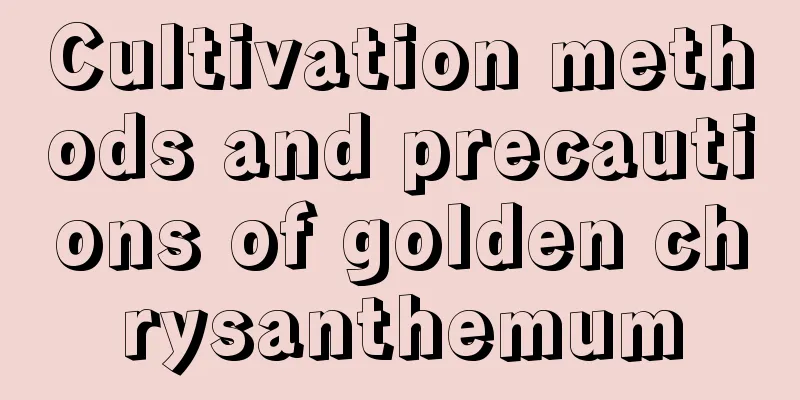Ivy cultivation methods and precautions

1. Maintenance methods1. Temperature: The temperature suitable for its development is between 18 and 25 degrees. If the temperature exceeds 30 degrees, the branches of the plant will turn yellow. If the temperature is below 3 degrees, the plant will be frostbitten. Therefore, if you want to grow ivy well, you must keep the temperature within the appropriate temperature range. 2. Watering: The temperature in spring and autumn is relatively stable and not high. Generally, watering once or twice a week is sufficient. The temperature in summer is relatively high and water evaporates quickly, so watering is required every other day. In winter, its growth ability weakens and the demand for water is not that great, so watering once a week is sufficient. 3. Fertilization: It consumes a lot of nutrients during the growth period. It needs to be applied with liquid fertilizer with a relatively mild effect once every two weeks. If there is no liquid fertilizer, it needs to be applied with granular fertilizer once a month. It should be noted that when choosing fertilizers, avoid choosing fertilizers with too much nitrogen, because excess nitrogen will make the patterns on the branches and leaves of the plant very shallow, which will affect its ornamental value. 4. Light: It is not resistant to strong light. When exposed to light, it is best to use diffuse light. It is best to avoid sunlight for one day a week and keep it in a cool place for one day. Except for summer, the lighting time in other seasons only needs to be guaranteed to be five hours. The lighting time in summer cannot exceed five hours, and strong light is not acceptable. 2. Breeding techniques1. Reproduction: It can be propagated by cuttings. Cut strong branches from healthy plants, about 30 cm in length, remove all the leaves at the lower end, and soak them in rooting water for half an hour. After the cut is dry, you can insert them into the cultivation soil. After inserting, place them in a cool place for maintenance, and they will grow roots in about two weeks. 2. Pruning: Generally speaking, it does not require pruning. You just need to take good care of it and cut off the dry and rotten branches. 3. Problem Diagnosis1. Pests: It is more susceptible to aphids. If found, you can spray it with chlorothalonil. 2. Disease: The plant is more likely to have yellowing branches and leaves. If the branches and leaves turn yellow, it may be because the nitrogen content in the soil exceeds the standard. You need to change the soil or reduce the use of nitrogen fertilizer. If it is caused by excessive light, you need to reduce the light. IV. Other issues1. Toxicity: Ivy is non-toxic. 2. Edibility: It cannot be eaten directly. |
<<: Cultivation methods and precautions of leopard arrowroot
>>: Cultivation methods and precautions of thornberry
Recommend
The time and method of pruning Christmas cactus (when is the best time to top the Christmas cactus)
Christmas cactus is an epiphytic succulent plant ...
What is the difference between Jianshi maple and blood maple?
1.Tree trunk The Jianshi maple can reach a height...
What kind of plant is seabuckthorn? What does the seabuckthorn plant look like?
1. What plants Sea buckthorn is a perennial decid...
When and how to plant carrots
Carrots are rich in nutrients and can be eaten as...
Clivia pictures and prices
1. Clivia miniata The flowers of the Clivia minia...
How to prune Christmas claw lotus
When is the best time to prune the crab claw lotu...
The main value of the flower
The ornamental value of the flower of heaven The ...
Mint maintenance precautions
1. Temperature control Few flower lovers pay atte...
Cultivation methods and precautions of rose pomegranate
Soil selection In some places, the soil temperatu...
Should I water Lithops after root pruning?
1. The necessity of root pruning When you first b...
Hydroponic method of Monstera, hydroponic to soil method
1. Hydroponic method 1. First, you need to cut a ...
Cultivation methods and precautions of purple duckweed
Reproduction method It is the nutrient soil or ri...
800 million Chinese people have seen these 10 species of spider plants, so don’t say you don’t know how to grow them!
Golden and Silver Edge Chlorophytum Features: The...
Heartleaf vine cultivation method
1. Lighting Heart-leaf vine does not require a lo...
What is the best season to plant lilies?
Lily is the most common flower in the home. It ha...









